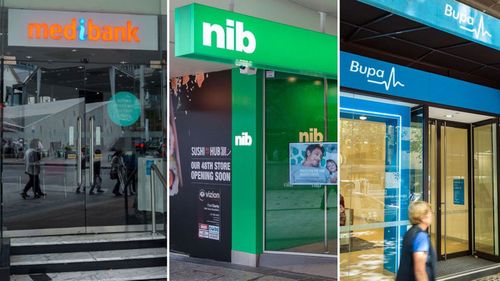Employers relying on JobKeeper payments to keep their staff on the books have just two days until the key economic lifeline runs dry.
JobKeeper is due to end this Sunday, March 28.
Employers can make claim payments for JobKeeper up until this date.
JobKeeper allows employers to pay full-time employees $1000 a fortnight and part-time employees (or those who work less than 80 hours in a 28-day period) $650 a fortnight.

Treasury estimates show the government expects as many as 150,000 people to lose their jobs – a dramatic figure that could spike the nation’s unemployment rate.
But JobKeeper is not the only financial change coming in April.
Here’s what you can expect.
Private health insurance price hikes
From April 1 more than 11 million Australians who hold private health insurance policies will face an average price hike on their premium of about 2.7 per cent.
For most people, this will be the second price hike in six months.
Taylor Blackburn, insurance expert at Finder, says too many Australians are not shopping around enough to get the best value from their private health insurance.
“Now is the perfect time to reassess your health cover and lock in the best possible price before the April increase,” Mr Blackburn said.

“Not all health funds are equal, particularly when it comes to price increases, so see what’s out there and leave the loyalty behind.
“Reviewing your level of cover, splitting your hospital and extras, and looking at what other funds have to offer can all offer you potential savings on your premiums.”
A breakdown of average private health insurance costs can be found below.
New JobSeeker rate as coronavirus supplement ends
The coronavirus supplement ends on March 31, 2021.
The new JobSeeker rate – after it was lifted by $50 a fortnight – will start from April 1 at $620.80 a fortnight, equating to $310.40 a week, or just over $44 a day.
When compared to pre-pandemic levels, the increase results in a real-world increase of $4 a day for recipients.
Prime Minister Scott Morrison said it was the biggest single increase in unemployment benefits since the mid-1980s.

“When the maximum rate of Coronavirus Supplement was briefly in force in 2020, Australia moved to around the OECD average,” authors Bruce Bradbury and Peter Whiteford wrote.
“The new rate from April 2021 will move Australia from the lowest to the second lowest, ahead of Greece only.”

The researchers contended Australia’s system is different to many other OECD countries (many of which have unemployment insurance) but the reality of job losses is still stark.
“The difference in philosophy does not change the brutal reality that when Australian workers lose their job, their incomes fall more than in almost any other high-income country,” the researchers wrote.
“Even after what the government has trumpeted as a historic increase, there will be few developed countries where people will be as worse off after losing work.
“Any permanent increase is welcome, but there is a long way to go.”

Average price of private health insurance policies*
|
Tier |
Current average monthly cost |
Current average annual cost |
Average yearly increase (+2.74%) |
Highest yearly increase (+5.47%) |
|
Basic |
$79.86 |
$958.32 |
$26.26 |
$52.42 |
|
Bronze |
$90.87 |
$1090.44 |
$29.88 |
$59.65 |
|
Silver |
$126.81 |
$1521.72 |
$41.70 |
$83.24 |
|
Gold |
$170.90 |
$2050.80 |
$56.19 |
$112.18 |
*Source: Finder
The information provided on this website is general in nature only and does not constitute personal financial advice. The information has been prepared without taking into account your personal objectives, financial situation or needs. Before acting on any information on this website you should consider the appropriateness of the information having regard to your objectives, financial situation and needs.
This content first appear on 9news
